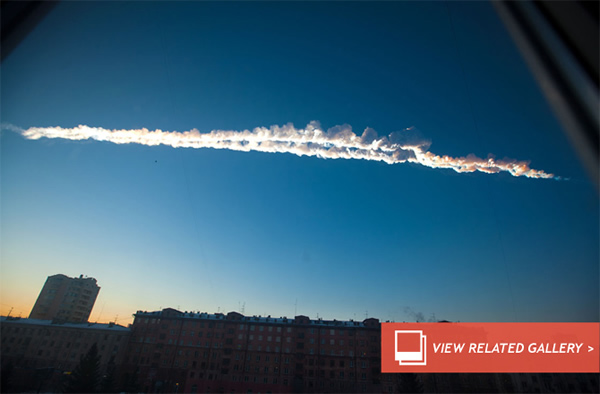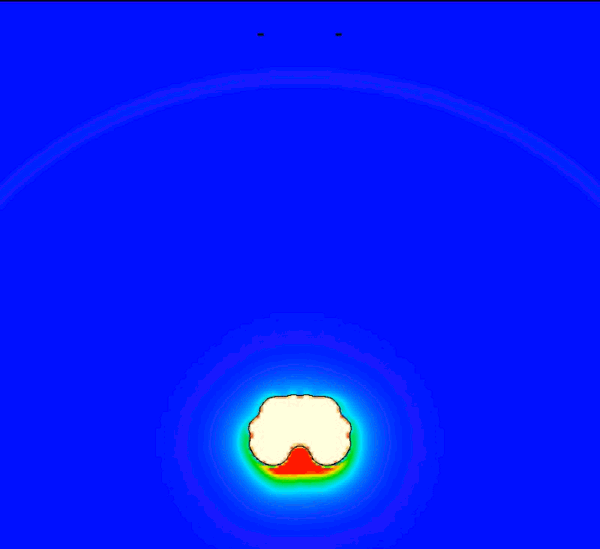Why Did the Chelyabinsk Meteor Have Two Tails?
Most of the time when a large meteor streaks across the sky it leaves a singular tail. But the meteor that slammed into the skies over the Russian city of Chelyabinsk on Feb. 15, 2013, left a now famous double tail.
That got some meteor experts wondering why. So, using the ample data that was collected during last February’s explosive event — made possible by the pervasive use of “dashcams” in vehicles, other video footage and other observed effects — researchers at Sandia National Laboratories in New Mexico have used a sophisticated aerodynamic computer model to replicate the double tail as it developed, in cross section. An abbreviated animation of the simulation is shown below.
Sure, there have been other simulations of what large meteors might do when they enter the atmosphere. But this is an unusual case where the simulation followed the actual, well-documented event, which is extremely valuable to the modelers for testing the simulation. It’s just one example of how the Chelyabinsk meteor, in an instant, changed a field of science from one that was largely speculative to one that was very real.
“This is the first asteroid disaster in the history of mankind,” remarked Clark Chapman of the Southwest Research Institute, who spoke at the meeting of the American Geophysical Union this week. And although it was a small disaster compared to a hurricane or an earthquake, it still is something we need to learn from to help minimize hazards to life and property, he said. “If we do that we will be in a better position to respond to them.”(Dec 13, 2013 12:20 PM ET // by Larry O'Hanlon)













